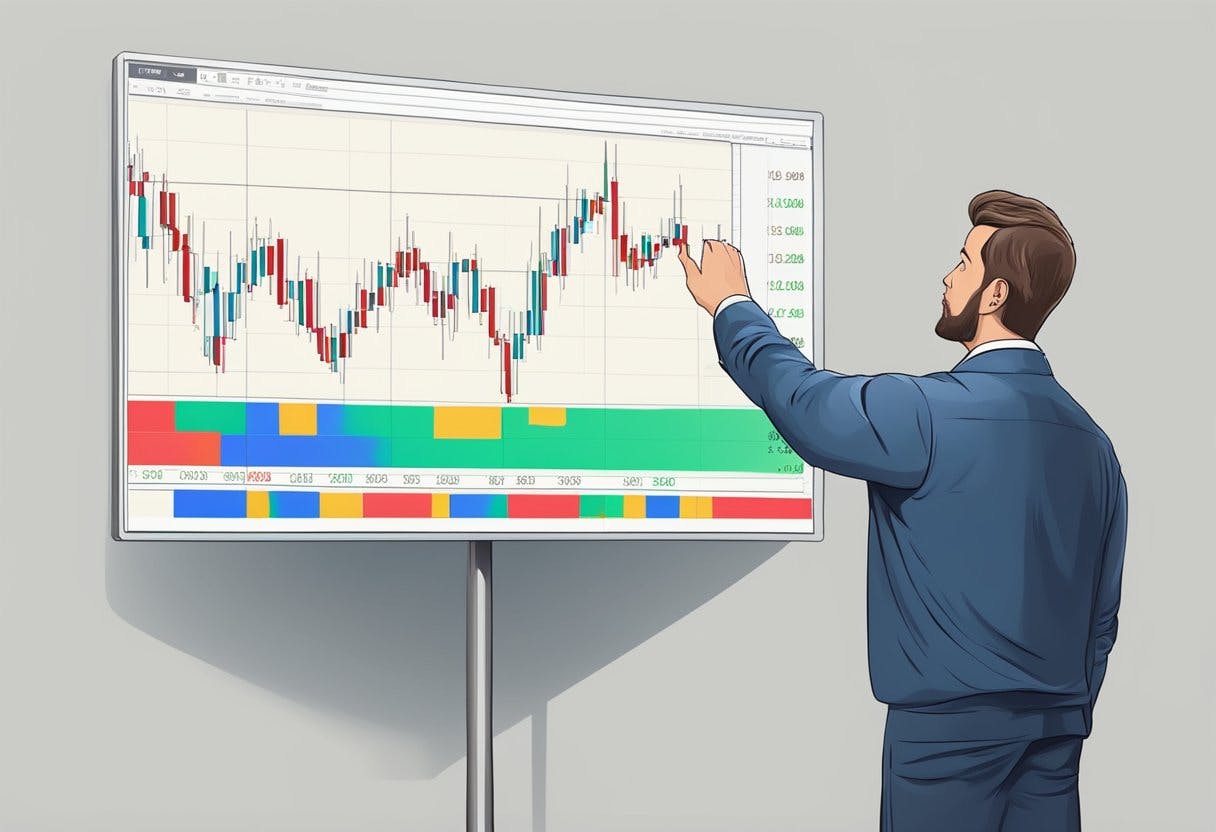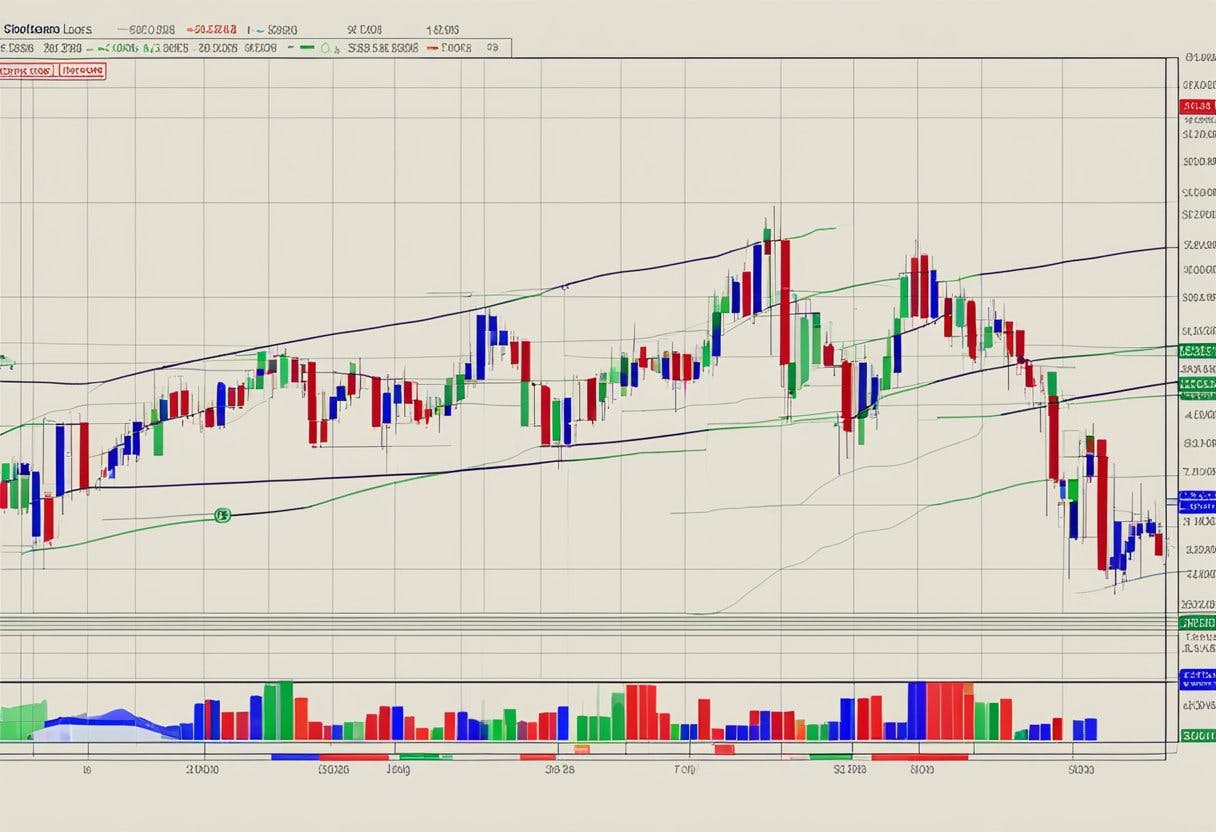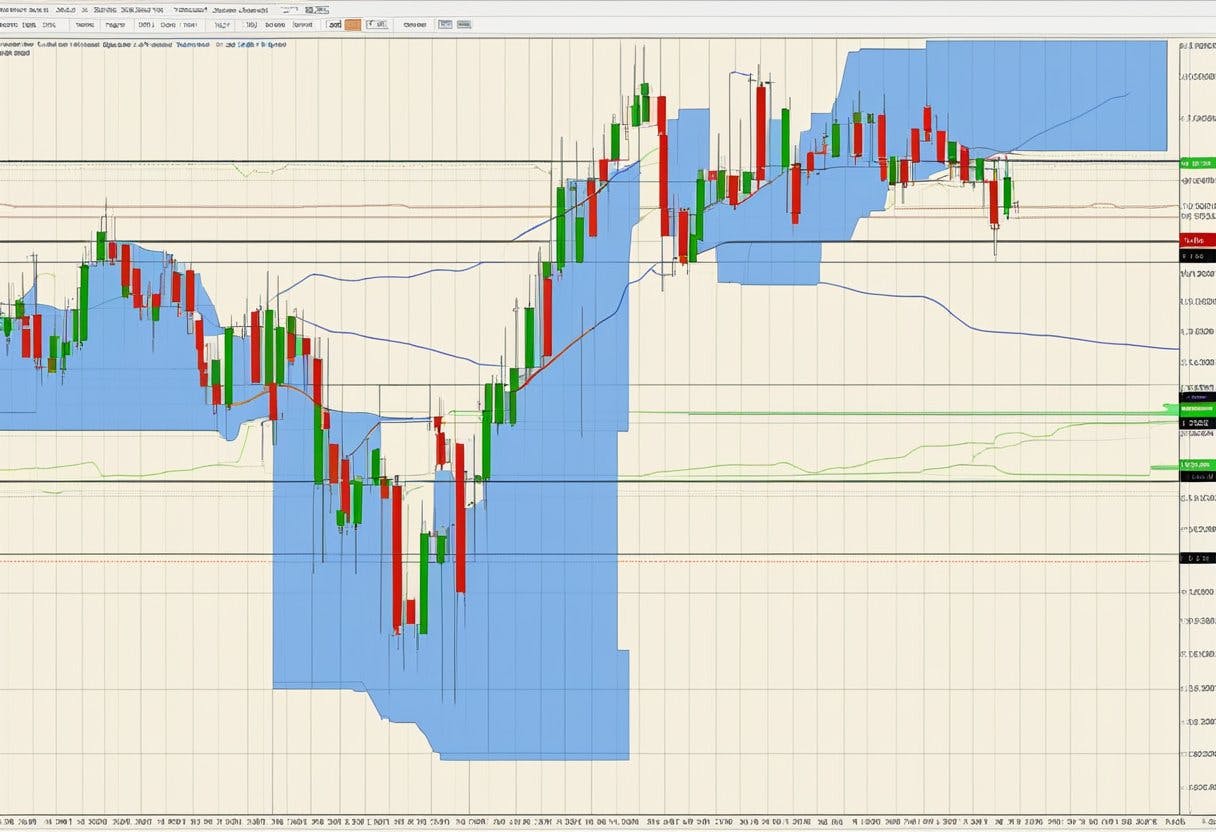
Many traders have experienced a situation where their forex trade gets stopped out even though the price did not reach their stop loss. This can be frustrating and confusing, especially for new traders. Understanding why this happens is crucial to improving one’s trading strategy and avoiding unnecessary losses.

Stop loss orders are a common risk management tool used by traders to limit their losses. When the price of a currency pair reaches a certain level, the stop loss order is triggered, and the trade is automatically closed. However, there are several reasons why a stop loss order may be executed even though the price did not reach the specified level. These include market volatility, liquidity issues, broker practices, and technical glitches.
To avoid premature stop outs, traders need to analyze market conditions and adjust their risk management strategies accordingly. Evaluating broker practices is also important, as some brokers may widen spreads during volatile market conditions, leading to stop loss orders being triggered prematurely. By understanding the reasons for premature stop outs, traders can make more informed decisions and improve their overall trading performance.
Key Takeaways
- Understanding stop loss orders is crucial to limiting trading losses.
- Premature stop outs can occur due to market volatility, liquidity issues, broker practices, and technical glitches.
- Analyzing market conditions, adjusting risk management strategies, and evaluating broker practices can help traders avoid unnecessary losses.
Understanding Stop Loss Orders

Definition of Stop Loss
A stop loss order is an instruction given to a broker to automatically close out a trader’s position once the price of an asset reaches a certain level. This is done to limit the trader’s potential losses. The stop loss order is placed at a level below the current market price for a long position and above the current market price for a short position. When the price reaches the stop loss level, the order is executed and the position is closed out.
Importance in Forex Trading
Stop loss orders are an essential part of risk management in Forex trading. They help traders to limit their potential losses in case the market moves against them. Without a stop loss order, a trader’s losses could potentially be unlimited. By placing a stop loss order, a trader is able to define their maximum loss on a trade and limit their risk.
Traders should always be aware of the risks involved in Forex trading and use stop loss orders to manage their risk. It is important to note that stop loss orders are not a guarantee against losses, as there may be instances where the price of an asset moves quickly and reaches the stop loss level before the order can be executed. Traders should also be aware of the potential for slippage, where the price of an asset may move quickly and the order may be executed at a different price than the stop loss level.
In summary, stop loss orders are a crucial tool for managing risk in Forex trading. They allow traders to limit their potential losses and define their maximum loss on a trade. It is important for traders to be aware of the risks involved in Forex trading and use stop loss orders to manage their risk.
Reasons for Premature Stop Outs

When trading in the forex market, it is not uncommon for traders to experience premature stop outs, where their trades are stopped out even though the price didn’t reach their stop loss. Some of the reasons for premature stop outs are:
Price Gaps and Slippage
Price gaps and slippage can occur when there is a sudden change in market conditions, such as news releases or economic events. In such cases, the price may move quickly and unexpectedly, resulting in a price gap or slippage. This can cause a trader’s stop loss order to be executed at a price that is different from the specified price, resulting in a premature stop out.
Broker Spreads and Volatility
Another reason for premature stop outs is the broker spreads and volatility. Broker spreads refer to the difference between the bid and ask price, and this can widen during times of high volatility. This can cause a trader’s stop loss order to be executed at a price that is different from the specified price, resulting in a premature stop out.
Technical Issues
Technical issues can also cause premature stop outs. For example, if a trader’s internet connection is unstable or if there is a problem with the trading platform, the stop loss order may not be executed at the specified price, resulting in a premature stop out.
To avoid premature stop outs, traders should ensure that they have a good understanding of the market conditions, and they should use appropriate risk management strategies, such as setting stop loss orders at appropriate levels. Traders should also choose a reputable broker with competitive spreads and a reliable trading platform.
Analyzing Market Conditions
When a trader’s forex trade gets stopped out even though the price didn’t reach their stop loss, it can be frustrating and confusing. However, there are several factors that can contribute to this situation. Analyzing market conditions can help traders understand why their trade was stopped out and how to avoid similar situations in the future.
Effects of Leverage on Positions
One factor that can cause a trade to be stopped out is leverage. Leverage allows traders to control large positions with a small amount of capital. However, it also magnifies the impact of price movements on a trade. If a trade is highly leveraged, even a small price movement can trigger a stop loss.
For example, if a trader has a leverage ratio of 100:1 and opens a position of $10,000, they only need to put up $100 as margin. However, if the price moves against them by just 1%, they will lose $100, which is the entire amount of their margin. This can cause the trade to be stopped out even if the price didn’t reach their stop loss.
Impact of Market Liquidity
Another factor that can cause a trade to be stopped out is market liquidity. When a market is highly liquid, there are many buyers and sellers, and it is easy to execute trades at the desired price. However, when a market is illiquid, there are fewer buyers and sellers, and it can be difficult to execute trades at the desired price.
If a trade is stopped out due to market liquidity, it means that there were no buyers or sellers at the desired price. This can happen if there is a sudden increase in volatility, such as during a news event or a market opening. In these situations, traders may need to adjust their stop loss or wait until the market stabilizes before entering a trade.
By analyzing market conditions, traders can better understand why their trades were stopped out and how to avoid similar situations in the future. They can adjust their leverage ratios, monitor market liquidity, and make informed decisions about when to enter and exit trades.
Risk Management Strategies
Forex trading involves a high degree of risk, and traders need to manage their risk exposure carefully. Risk management strategies help traders minimize their losses and protect their trading capital.
Setting Appropriate Stop Loss Levels
One of the most important risk management strategies is setting appropriate stop loss levels. A stop loss order is an order placed with a broker to sell a security when it reaches a certain price. The purpose of a stop loss order is to limit a trader’s potential losses if the market moves against them.
Traders should set stop loss levels based on their risk tolerance and the volatility of the currency pair they are trading. Setting too tight a stop loss level can result in the trade being stopped out prematurely, while setting a stop loss level too far away can result in a large loss if the market moves against the trader.
Utilizing Take-Profit Orders
Take-profit orders are another important risk management tool. A take-profit order is an order placed with a broker to sell a security when it reaches a certain price. The purpose of a take-profit order is to lock in profits when a trade is going well.
Traders should set take-profit levels based on their risk tolerance and the potential reward of the trade. Setting a take-profit level too low can result in missed profits, while setting a take-profit level too high can result in the trade being closed out prematurely.
Balancing Risk and Reward
Risk management strategies involve balancing risk and reward. Traders should always consider the potential reward of a trade relative to the potential risk. A favorable risk-reward ratio ensures that even if a trader loses some trades, the profits from winning trades outweigh the losses.
Traders should also manage their money carefully. They should never risk more than they can afford to lose, and they should always have a plan for managing their trading capital. Risk management strategies can help traders minimize their losses and maximize their profits, even in a volatile market.
Evaluating Broker Practices
Understanding Broker Policies
One of the first things to consider when trying to understand why a trade was stopped out even though the price didn’t reach the stop loss is the broker’s policies. Brokers have different policies regarding stop losses and execution quality, and it is important to understand these policies before opening an account with a broker.
Brokers may have a policy of widening the spread during volatile market conditions, which can cause stop losses to be triggered even if the price didn’t reach the stop loss level. In addition, brokers may have a policy of executing trades at the ask price, which can also cause stop losses to be triggered prematurely.
Assessing Execution Quality
Assessing execution quality is another important factor to consider when trying to understand why a trade was stopped out even though the price didn’t reach the stop loss. Execution quality refers to the speed and accuracy with which a broker executes trades.
If a broker has poor execution quality, it may take longer for the broker to execute a trade, which can increase the likelihood of a stop loss being triggered prematurely. In addition, if a broker has poor execution quality, it may be more likely to execute trades at the ask price, which can also cause stop losses to be triggered prematurely.
To mitigate the risk of a stop loss being triggered prematurely, traders should consider using a broker with a reputation for good execution quality and transparent policies regarding stop losses. Additionally, traders should consider using a wider stop loss to allow for market volatility and should monitor their trades closely to ensure that stop losses are not triggered prematurely.
Frequently Asked Questions
What causes a stop loss to trigger prematurely in forex trading?
Stop loss orders can be triggered prematurely in forex trading due to market volatility, sudden price movements, and unexpected news events. In such cases, the market may move rapidly in the opposite direction of the trader’s position, causing the stop loss order to trigger before the trader’s intended exit point is reached.
How can slippage affect stop loss orders in the forex market?
Slippage can occur when there is a delay between the trader’s order and its execution. This delay can be caused by market volatility, low liquidity, or technical issues with the broker’s trading platform. In such cases, the trader’s stop loss order may be executed at a worse price than intended, resulting in a larger loss than expected.
Could a spread widening be responsible for an early stop loss execution?
Spread widening can occur during periods of market volatility or low liquidity. In such cases, the spread between the bid and ask price may widen, causing the trader’s stop loss order to be executed at a worse price than intended. This can result in a larger loss than expected.
What role do broker practices play in unexpected stop loss activation?
Broker practices can play a significant role in unexpected stop loss activation. Some brokers may use stop loss hunting techniques to intentionally trigger stop loss orders and generate additional revenue. Traders should carefully research their broker’s practices and choose a reputable broker with transparent policies.
How does the liquidity of a currency pair influence stop loss execution?
The liquidity of a currency pair can influence stop loss execution. Highly liquid currency pairs typically have tighter bid-ask spreads and are less prone to slippage and unexpected stop loss activation. Less liquid currency pairs, on the other hand, may have wider spreads and be more prone to slippage and unexpected stop loss activation.
Is there a possibility of technical glitches affecting stop loss orders?
Technical glitches can affect stop loss orders in forex trading. These glitches can be caused by issues with the broker’s trading platform, internet connectivity issues, or other technical problems. Traders should monitor their trades closely and be prepared to manually exit positions if technical issues arise.
Read More




